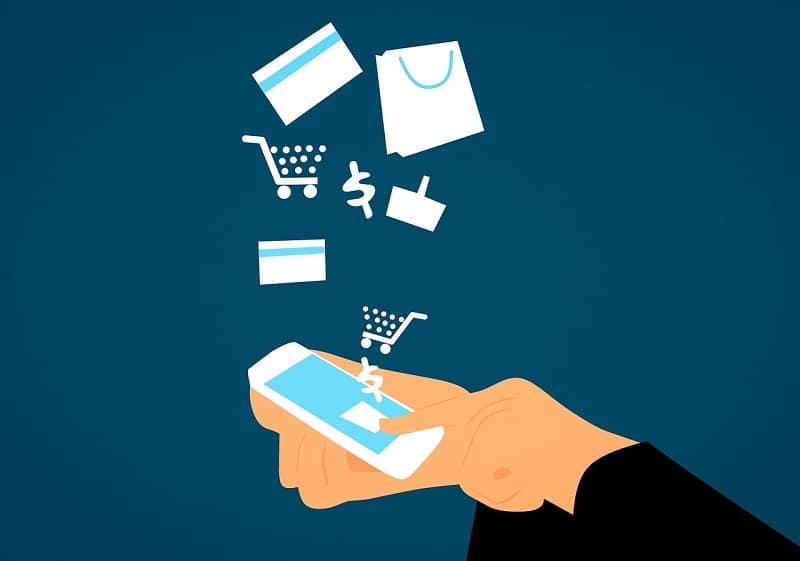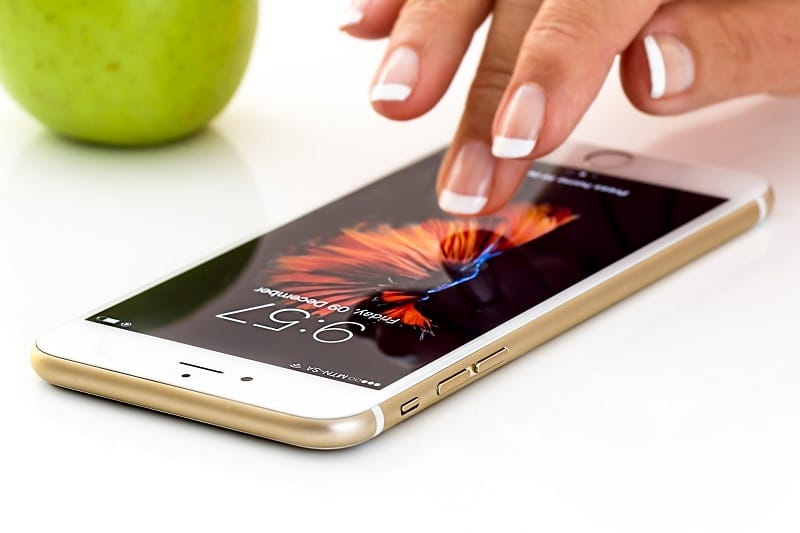What are the uses cell phones in the purchasing process?
How do consumers use cell phones in their shopping? How do they reconcile digital and point of sale? What factors encourage them to buy on mobile rather than in-store? Answers with the Proximis and iloveretail.fr study conducted by OpinionWay.
Proximis, a specialist in unified commerce, presents the results of a study carried out with OpinionWay and iloveretail.fr highlighting the use of cell phones by French people in their online and offline shopping trips. We buy mostly from home. Unsurprisingly, 75% of French people make their purchases on the Internet since their stay. For 1 out of 2 French people (49%), it happens in the bedroom. Next come the kitchen (36%) and the workplace (34%).
In fact, no room is overlooked, since one French person in five (21%) does his or her shopping from the toilet, a place that is on a par with the bathroom, just after the car (23%) and at the restaurant (25%).

Even though 75% of the French still use a computer, one in two French people now use their cell phone to shop on the Internet, and one in four use their tablet. Note the emergence of voice assistants (Alexa, Google Home) which are used by 8% of the French. In terms of timing, consumers say they buy in the afternoon (67%) and the evening (52%) being slightly more conducive to making purchases on the Internet.
A third of French people (34%) make at least one purchase per month via their cell phone
French people buy most frequently via their cell phones from food superstores (18%), fashion/clothing sites (15%) and general e-merchants (14%).
This trend has accelerated with the health crisis: 1 in 4 French people (24%) use their phone more often to buy at least one type of product.
More and more information research on digital technology
How do consumers reconcile digital and physical purchases? One thing is certain: in-store purchases are increasingly anticipated and planned, with a search for information upstream, whether on the computer (70%), on the cell phone (42%) or even on the shelf (13%).
In terms of usage, before buying a product, the mobile is mostly used to look for the location of the store (31%), the opening hours (30%), or the price of a product (20%).
In stores, the use of the telephone is well entrenched: nearly 1 in 2 French people (48%) often use it to perform at least one action. While 48% use it to use their loyalty card, many consider the mobile as an effective ally to learn more before buying. Thus, still in stores, 42% use it to look for information on the product but also to take pictures (41%) or compare prices (40%). 1 French person out of 5 uses it to post on social networks. In strong progression since the health crisis of Covid-19, contactless payment is now used by 38% of the French.

Fading boundaries between store and digital
50% of French people buy on mobile after seeing a promotion in store. 37% are prompted by paper communication (catalog, flyers …), e-mails (33%), notifications generated by its mobile applications (28%).
The French are keen to use new functionalities to simplify their shopping experience. Among the applications that would be popular with the French when making a purchase in a store, we find the functionality allowing them to use their loyalty program (53%), to simplify the withdrawal of purchases in store (50%) and to know the availability of the product in another store and to reserve it (49%).
The levers of mobile optimization
Globally, the different information appearing on the product pages of e-commerce sites satisfy the French. When making a purchase on a cell phone, the French would like to see the delivery costs appear in larger (30%), before the exchange and return conditions (25%), the availability of the product in store (24%), the price (24%) and the estimated delivery date (24%).
Finally, Proximis asked OpinionWay to survey the French to find out which brands they believe offer the best cell phone shopping experience on their website. Not surprisingly, Amazon came out on top across all sectors. Decathlon takes second place on the podium. The surprise came from chocolate maker Jeff from Bruges, who took third place and topped the podium with brands such as Fnac, Leclerc, Carrefour and Yves Rocher. If we look sector by sector, it is for example Norauto for the Auto/Motorcycle, Leroy Merlin for the Brico/Jardin sector, JouéClub for Toys or Ikea for Home and Carrefour for Food that are greeted by the French.

Our french SEO company wants to change the way international companies think about marketing on Google. Our SMART METHODOLOGY is based on an ethical, transparent and efficient service (monthly action plan, dedicated SEO consultant, pre-defined deliverables, KPIs to track results etc). SmartWeb Group is one of the top SEO agencies in France allowing websites to rank on the first page of Google. Since 2010, 97% of our clients have renewed their trust following a first collaboration.

